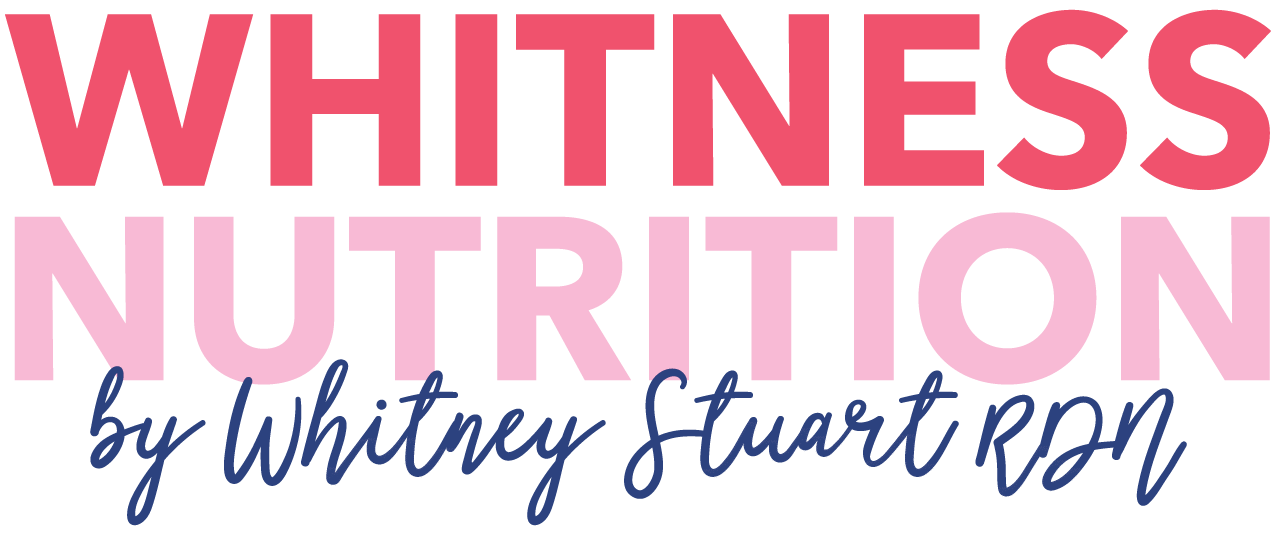5 Unique Fruits That Do More Than Taste Good
Adding fruit to your diet is a valuable intervention if you’re looking for better health this year! As a dietitian, I like patients to add fruit to their diet because it contains a myriad of health benefits! Fruit is rich in vitamins, fiber, antioxidants, and minerals. And, the more variety you eat, the more nutritional “bases” you cover! It’s so important to add fruit to your diet.
You might be surprised but only 1 in 10 Americans eat enough fruit and vegetables. And only 11% of Americans meet their daily fiber needs! Trying out different kinds of fruits, sweet, tart, and ones with a bitter taste, not only expands your palate, but it also helps you consume more nutrients and fiber in your diet! If you’re not a fan of pears and apples, no worries, there are plenty of unique fruits with unique flavors to try, and many of them have additional benefits. They do more than just taste good; they support everything from gut health and hormone balance to energy, mood, and immune function. I’m going to share about these unique fruits and their benefits in today’s post.
your palate, but it also helps you consume more nutrients and fiber in your diet! If you’re not a fan of pears and apples, no worries, there are plenty of unique fruits with unique flavors to try, and many of them have additional benefits. They do more than just taste good; they support everything from gut health and hormone balance to energy, mood, and immune function. I’m going to share about these unique fruits and their benefits in today’s post.
Want to go deeper? Download my free Whitness Nutrition Guide to Unique Fruits & Veggies for a colorful cheat sheet on what to eat and why!
What Are Unique Fruits That Do More Than Taste Good?
1. Kiwi
Kiwis are a great tool for digestive health. And, they are rich in Vitamin C!
Taste/Texture: Tart-sweet, juicy, with a fuzzy or smooth brown skin.
Appearance: Bright green flesh with tiny black seeds.
Where It’s Grown: Native to China, now grown in New Zealand, Italy, and California.
Nutrient Benefits:
- Vitamin C: One kiwi provides over 70% of your daily needs.
- Fiber: Just 2 kiwis a day can improve digestion and ease constipation.
- Digestive Enzymes: Contains actinidin, an enzyme that may aid protein breakdown.
Pro Tip: Add sliced kiwi to yogurt bowls or smoothies for a tangy boost.
2. Medjool Dates
Taste/Texture: Soft, chewy, caramel-like flavor.
Appearance: Large, wrinkled brown fruit.
Where It’s Grown: Native to the Middle East and North Africa. Grown in California and Arizona.
Nutrient Benefits:
- Rich in magnesium: Supports muscle relaxation and mood regulation.
- Fast acting, natural carbs: Great for quick energy, especially before a workout.
- Potassium & Iron: Helps maintain electrolyte balance and oxygen transport.
Favorite Snack: Their sweet taste pairs perfectly with a nutty salty crunch! I spread nut butter on 1–2 Medjool dates and sprinkle with sea salt—my go-to pre-workout fuel. I’ve featured it in my summer hosting swaps for those looking for healthier treats.
Bonus: Research suggests dates may promote easier labor when consumed in the last few weeks of pregnancy.
3. Passionfruit
Taste/Texture: Sweet-tart, floral aroma, filled with edible crunchy seeds.
Appearance: Purple or yellow thick-skinned fruit, size of a small egg – very aromatic.
Where It’s Grown: Native to South America. Also grown in Brazil, Peru, Ecuador, Hawaii, Australia, and South Africa. Fun fact: fresh, whole passionfruit is still relatively rare in standard grocery stores.
Nutrient Benefits:
- Vitamin C: Supports immune health and collagen production.
- Fiber: One fruit offers ~2g fiber, helping with satiety and gut support – excellent fiber content!
- Plant Compounds: Rich in polyphenols for antioxidant benefits.
Tip: Scoop the pulp into sparkling water for a tangy tropical mocktail!
4. Dragonfruit (Pitaya)
Taste/Texture: Lightly sweet, similar to a kiwi-pear hybrid.
Appearance: Bright pink or yellow skin with green scales; flesh is white, red, or magenta with black seeds.
Where It’s Grown: Native to Mexico and Central America; grown in Vietnam, Thailand, Israel, and Southern California & Florida.
Nutrient Benefits:
- Vitamin C & Antioxidants: Supports skin health and reduces inflammation.
- Hydrating & Low-Calorie: Great for summer snacks or post-workout.
Serving Idea: Cube and pair with a squeeze of lime or blend into smoothie bowls.
5. Horned Melon (Kiwano)
Taste/Texture: Mildly sweet and tart—like a mix of cucumber, banana, and kiwi.
Appearance: Bright orange spiky rind with lime-green jelly-like flesh and edible seeds.
Where It’s Grown: Native to sub-Saharan Africa; cultivated in New Zealand, California, Australia, and South America.
Nutrient Benefits:
- Magnesium & Vitamin C: Aids in mood support and immune function.
- Hydrating: High water content makes it a unique post-sweat snack.
Try It: Slice in half and scoop out the center with a spoon!
 How to Incorporate More Fruits and Vegetables into Your Day
How to Incorporate More Fruits and Vegetables into Your Day
- Blend frozen bananas and mangoes into a creamy dessert.
- Top yogurt with kiwi or passionfruit for added fiber and flavor.
- Add spinach to egg scrambles and smoothies.
- Stir chopped veggies into sauces like marinara or taco meat.
- Make fruit + spinach popsicles with yogurt and berries.
- Roast broccoli or cauliflower ahead of time for easy sides.
- Remember: Frozen produce is just as nutritious—and super convenient!
Eat the Rainbow: Why Color Matters
Next time you’re at the grocery store, think about the colors you have at home in your fridge! The color gives us function clues and is a helpful way to target more diversity in your produce intake:
- Red = Heart health
- Orange/Yellow = Eye and skin support
- Green = Hormone and detox support
- Blue/Purple = Antioxidants for brain health
Looking to add more nutrient-dense foods to your diet overall? Don’t miss my post on the most nutrient dense foods.
Conclusion
Fruit is more than just nature’s candy—it’s functional medicine in a colorful package. Try a new one this week and experience the benefits for digestion, energy, mood, and beyond.
Leave a comment below with a fruit you’re excited to try—or one you already love that we missed! And don’t forget to share this post with someone who could use a little color in their cart!
Book a discovery call with me today!






